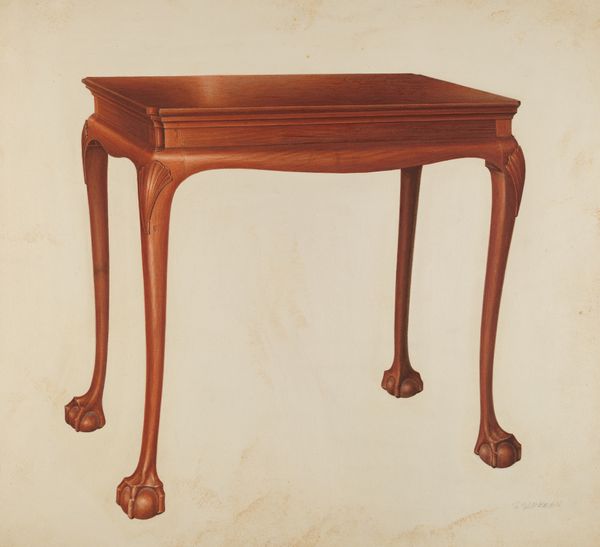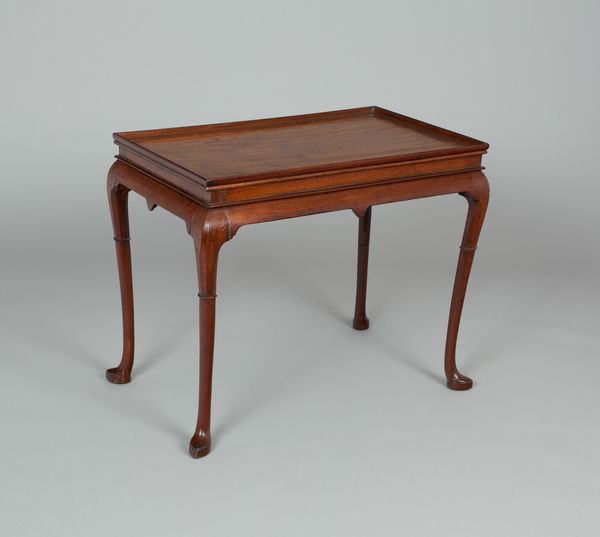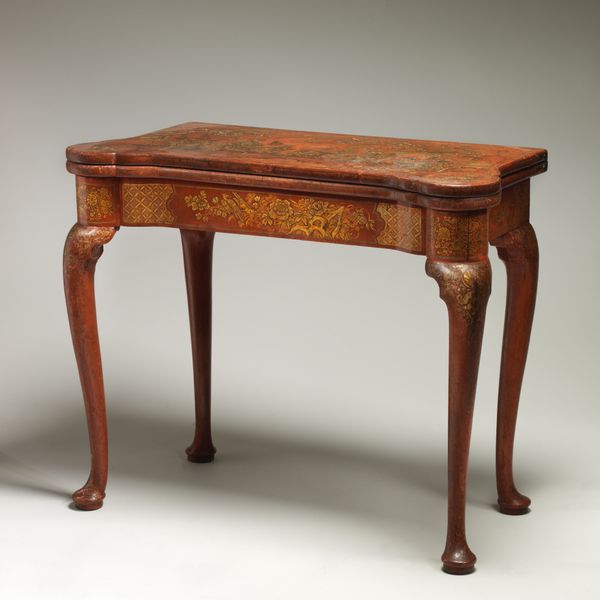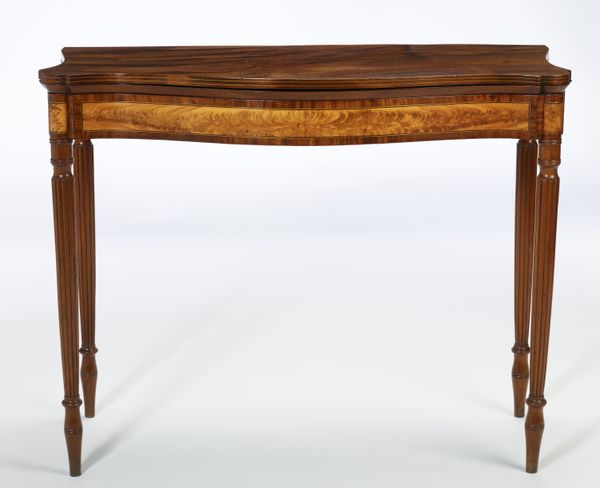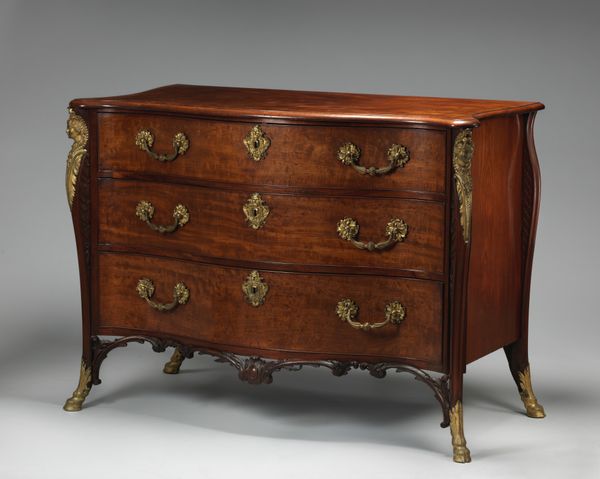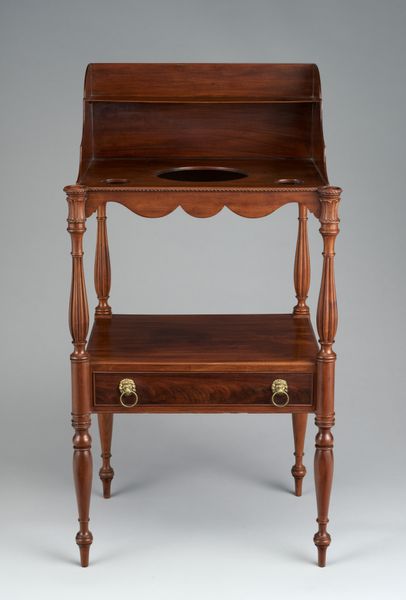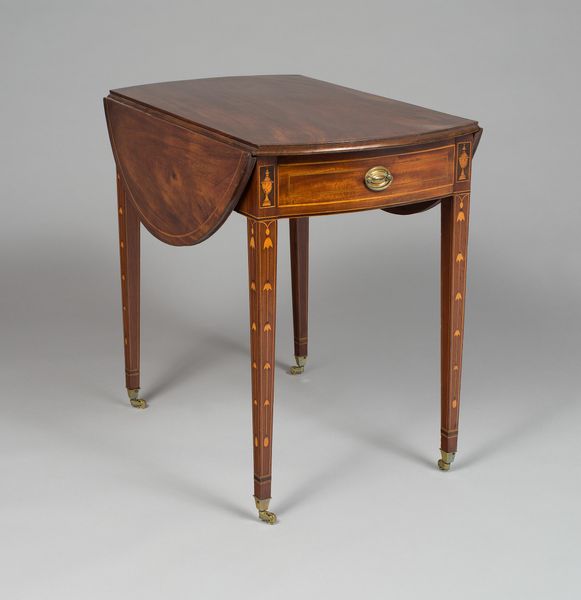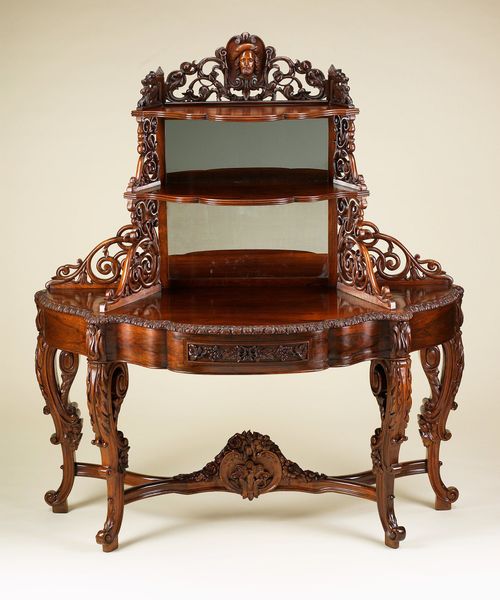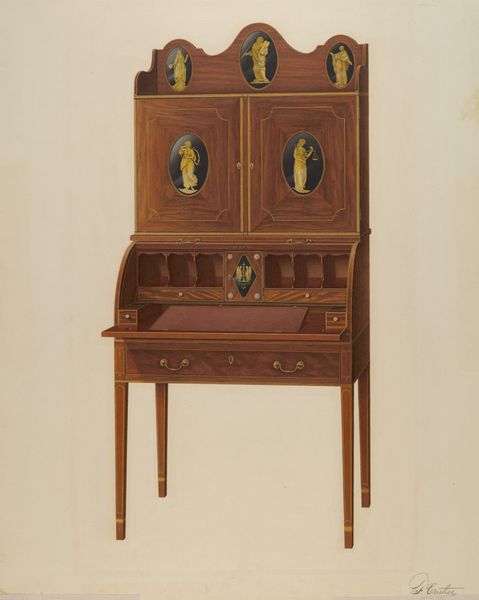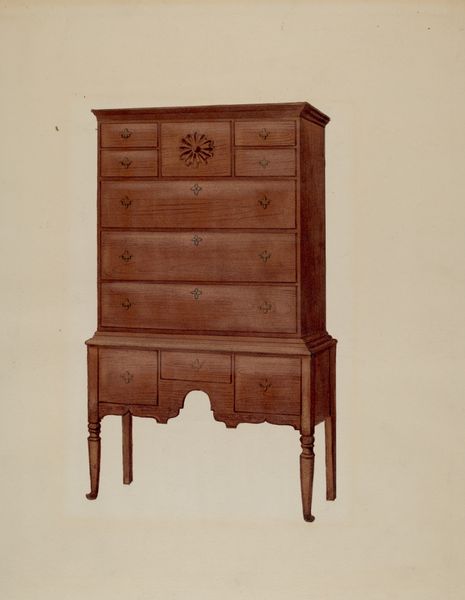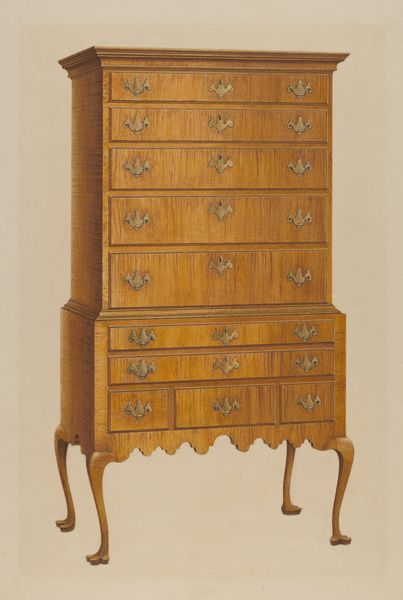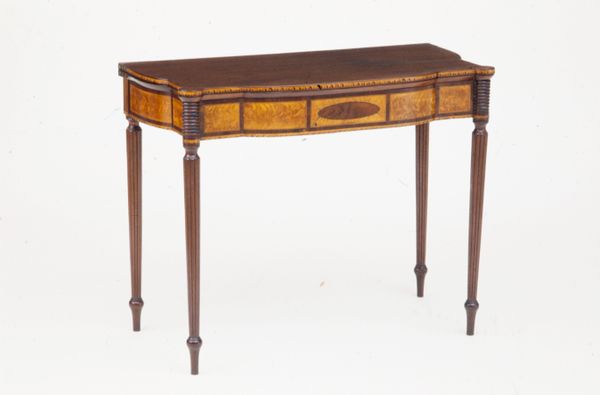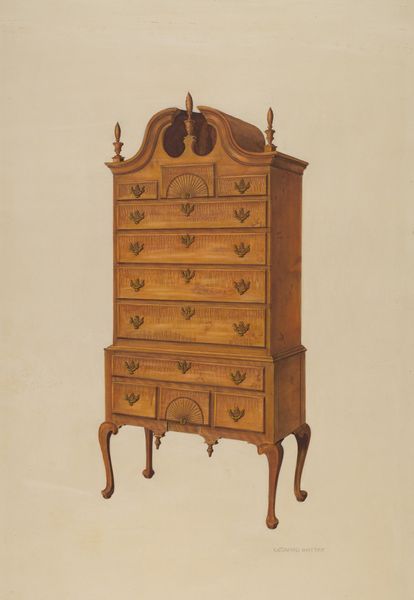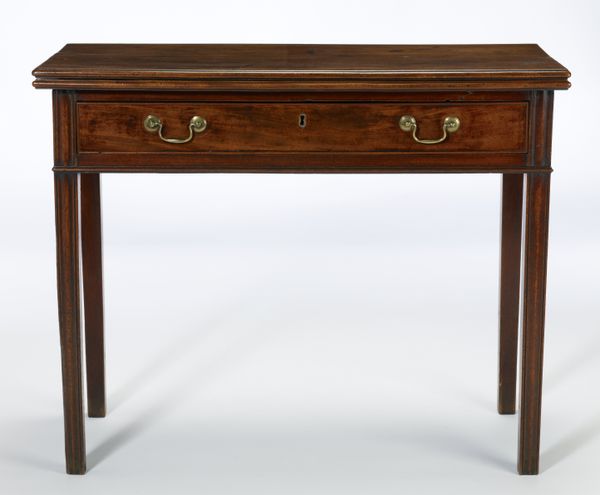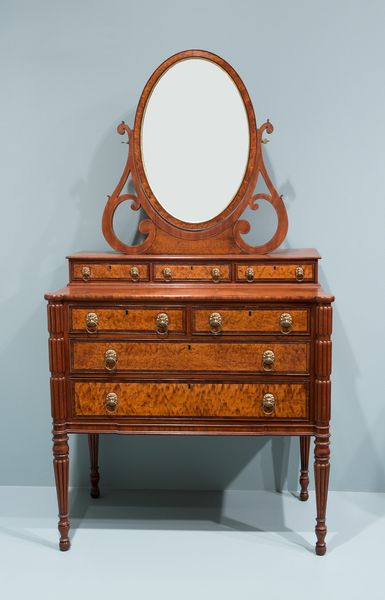
drawing, watercolor
#
portrait
#
drawing
#
watercolor
#
academic-art
#
watercolor
Dimensions: overall: 22.9 x 29 cm (9 x 11 7/16 in.)
Copyright: National Gallery of Art: CC0 1.0
Editor: Here we have Bernard Gussow's "Sofa," a watercolor drawing from around 1940. It's deceptively simple at first glance, but I'm really drawn to the detailed rendering of the fabric and the wood. What do you notice about its composition and structure? Curator: Initially, one is struck by the rigid geometry tempered with delicate ornamentation. The composition foregrounds a symmetrical arrangement, the horizontal plane of the sofa counterpointed by the verticality of its legs. Observe how the artist meticulously articulates the textures. Editor: The textures are what drew me in! How does Gussow use watercolor to create such varied effects? Curator: Precisely! Gussow's mastery lies in his layering of watercolor. Translucent washes establish a base, upon which he meticulously applies finer details – consider the subtle variations in tone used to create a sense of depth and dimension in the upholstery and wooden ornamentation. Notice how the linear quality in the drawing emphasizes structure, defining edges. How does the application affect the feeling conveyed by the image? Editor: I see how those details almost create a sense of formality, despite the domestic subject matter. It makes me think about how everyday objects can also be sites of artistic interest. Curator: Indeed. This approach also encourages us to contemplate the role of craftsmanship, the value inherent in creating an accurate, albeit stylized, rendering of a functional item. It highlights a synthesis between art and design, challenging notions of aesthetic hierarchies. Editor: I hadn't considered the idea of value in craftsmanship this way. Looking at the balance and details really opens up another layer of interpretation. Curator: And it encourages further reflection on what aspects and components are required for artistic representation.
Comments
No comments
Be the first to comment and join the conversation on the ultimate creative platform.
